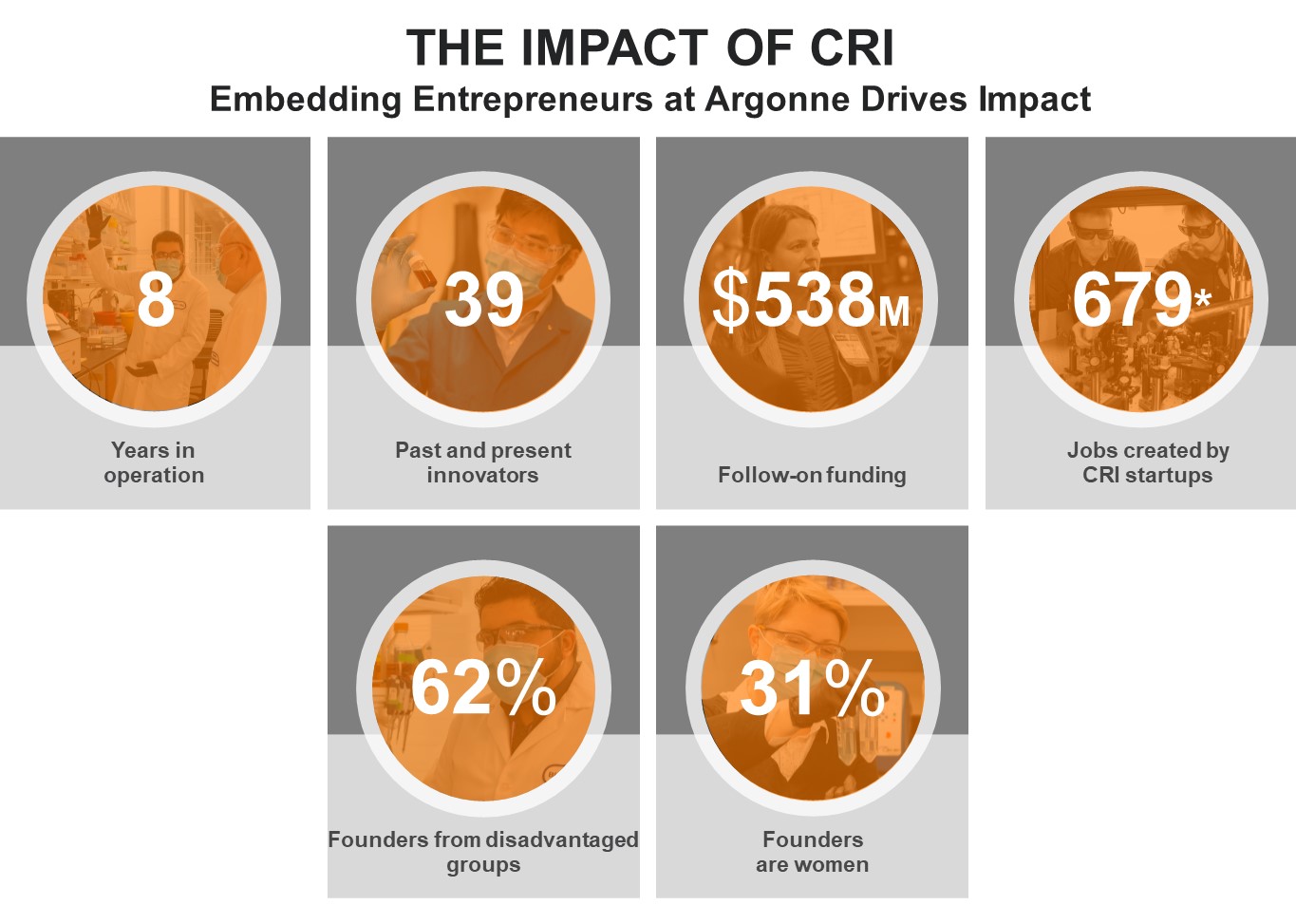
Chain Reaction Innovations’ impact is far-reaching in its eighth year of embedding early-stage entrepreneurs at Argonne National Laboratory. CRI’s first cohort graduated in June 2019, amassing millions in investment. The combined total raised by CRI innovators in April 2024 is $538 million. *In addition, the program helped create 679 jobs to date, of which 141 were internships.
Demographic categories for economically and socially disadvantaged small businesses follow the U.S. Department of Energy’s Office of Science definitions.
Innovators and the CRI team work together to advance cutting-edge technologies that offer clean energy solutions to climate change. This support allows startups to bring their deep tech to market more quickly. There are many impacts realized by the CRI program. Learn more from our Fact Sheet.

